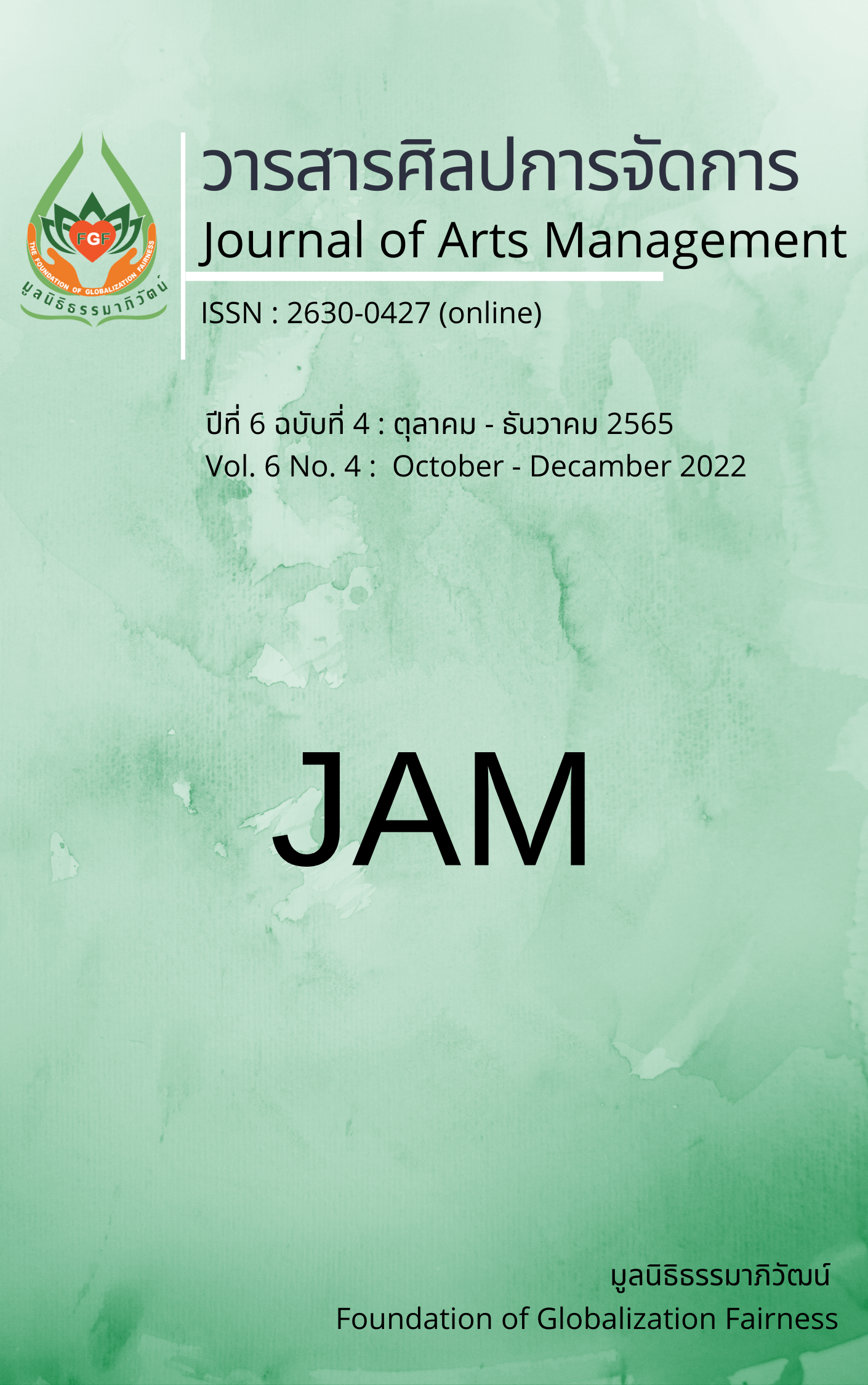Development of Innovative media to Solve the Problems of Literacy and Analytical Thinking Problems of the students in Small Network Schools
Main Article Content
Abstract
Solving problems in literacy, writing, and analytical thinking among students in the age of technology. Teachers need to have knowledge of creating innovative media for use in learning management. and develop students. This article aimed to study (1) the problems and needs for the development of innovative media for solving literacy problems. and analytical thinking; (2) create innovative media to solve literacy problems and analytical thinking; and (3) assess the usefulness of innovative media for solving literacy problems and analyze. It was a research that combines both quantitative and qualitative methods. The group of informants consisted of the director and two teachers per school, totaling 20 people. The usefulness assessment group consisted of 3 media development experts. The tool used to collect the data. including questionnaires, group chat logs, and assessment forms. The statistics used to analyze the data were mean, standard deviation, The results were found as follows:
1. Problems in literacy and analyze Overall, it was at a high level. Reading problems, problems with illiteracy and reading errors, and writing problems, problems in writing words, misspellings, problems with analytical thinking. The problem was encountered and could not be reasoned with inability to think of linking knowledge. There was a demand for innovative media development. It was found that teachers needed to develop innovative media for making booklets.
2. Creation of innovative media to solve literacy problems and analyze them by using the training process, it was found that teachers were satisfied at a high level.
3. The results of the evaluation of the usefulness of innovative media for literacy problems and analysis found that innovative media are convenient and easy to implement in learning activities.
Article Details

This work is licensed under a Creative Commons Attribution-NonCommercial-NoDerivatives 4.0 International License.
Views and opinions appearing in articles in the Journal of Arts of Management It is the responsibility of the author of the article. and does not constitute the view and responsibility of the editorial team I agree that the article is copyright of the Arts and Management Journal.
References
Bangkokbiznews. (2022). how to develop children Able to read, write and analyze. https://www.bangkokbiznews.com/social/930515
Boonmee, W. (2021). Teaching media and learning in the 21st century. Journal of Juristic Person Management and Local Innovation, 7(9), 373-385.
Chaisoongnern, C., & Wongsirasawat. C. (2021). The development of books to practice additional skills focusing on reading and writing skills. The students' self-form 4P. Journal of Education Thaksin University, 21(1), 82-93.
Churak, P. (2019). Policy proposal for solving the problem of illiterate students of students Grade 1. Journal of MCU Nakhondhat, 6(3), 1095-1108.
Deming, W.E. (1986). Out of the Crisis. MIT Press.
Khamanee, T. (2014). Pedagogical Science: Knowledge for organizing the learning process with efficiency (18th ed.). Chulalongkorn University.
Klauda, S.L. (2008). The relations of children’s perceived support for recreational reading from parents and friends to their motivation for reading[Doctoral dissertation, University of Maryland]. https://www.proquest.com/docview/250796955
Muchimapiro, V. (2014). The role of educational innovation in learning. Ratchaphruek Journal, 12(2), 1-9.
Nooyod, A., Nooyod, W., Hirantom, N., & Wanlapachai. A. (2019). Developing reading comprehension ability by DR-TA teaching method through electronic books for students in the English Language department. Journal of Education Khon Kaen University, 42(1), 21-31.
Office of the Education Council Secretariat. (2017). National Education Plan B.E. 2017-2036. Prikwarn Graphic.
Office of Academic Affairs and Educational Standards. (2015). Handbook of operations, literate, read fluently, write fluently and communicate. Agricultural Cooperatives Congregation of Thailand.
Rogers, E. M. (2003). Diffusion of Innovations (5th ed.) Free Press.
Srisa-ard, B. (2017). Preliminary research (10th ed.). Suwiriyasan.
Wechayaluck, N. (2021). Learning management. Wanida.


